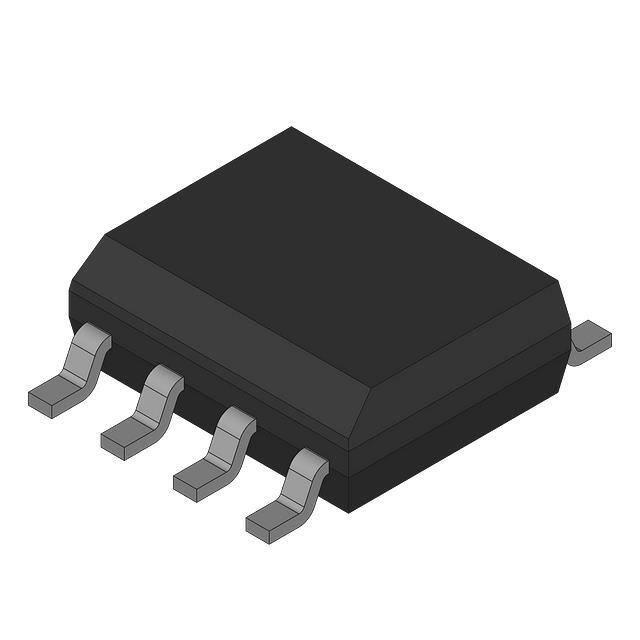Analysis of Photodiode Array
What does "Photodiode Array" Mean?
A Photodiode Array (PDA) is an optoelectronic device consisting of multiple photodiodes arranged in a linear or two-dimensional grid pattern. Each photodiode in the array converts light into an electrical signal, making PDAs essential components in various applications that require the detection and measurement of light.
Working Principles of Photodiode Array
The working principle of a Photodiode Array (PDA) revolves around the photoelectric effect. In this phenomenon, incident light photons are absorbed by semiconductor materials within the photodiodes, initiating the generation of electron-hole pairs. When photons with sufficient energy strike the semiconductor material, they are absorbed, exciting electrons from the valence band to the conduction band, creating electron-hole pairs in the process. Each absorbed photon generates one electron-hole pair. The free electrons and holes created by this process result in a flow of current within the semiconductor material, known as photocurrent. Photodiodes in the PDA are typically designed to be sensitive to light incident from one direction, allowing for directional sensitivity.
PDAs consist of multiple photodiodes arranged in a two-dimensional array. Each photodiode responds independently to incident light, enabling the detection of light patterns across the array. The photocurrent generated by each photodiode is typically read out using electronic circuitry. The spatial distribution of the photocurrents across the array provides information about the intensity and spatial distribution of the incident light. This working principle allows PDAs to convert incident light into electrical signals, making them valuable tools in various imaging and sensing applications.
Types of the Photodiode Array
Photodiode Arrays (PDAs) come in various types, each designed for specific applications and characterized by different arrangements, materials, and functionalities. Here are the main types of photodiode arrays:
1. Linear Photodiode Arrays
• Structure:
Comprised of photodiodes arranged in a single line.
• Applications:
Spectroscopy: Used in spectrophotometers for detecting light at different wavelengths.
Line Scanning: Employed in scanners and barcode readers for line-by-line image capture.
• Advantages:
Simple design.
High-speed data acquisition.
Suitable for applications requiring linear scanning.
2. Two-Dimensional (2D) Photodiode Arrays
• Structure:
Photodiodes are arranged in a grid pattern, forming a two-dimensional array.
• Applications:
Digital Cameras: Used to capture images by converting light patterns into electrical signals.
Medical Imaging: Employed in X-ray and CT scanners for creating detailed images.
Astronomy: Used in telescopes for capturing high-resolution images of celestial bodies.
• Advantages:
High spatial resolution.
Capable of capturing complex images.
Versatile in various imaging applications.
3. Avalanche Photodiode Arrays
• Structure:
Utilizes avalanche photodiodes, which operate with a high reverse bias voltage to amplify the photocurrent.
• Applications:
Low Light Detection: Used in applications requiring the detection of low light levels.
LIDAR: Employed in light detection and ranging systems for distance measurement and 3D mapping.
• Advantages:
High sensitivity and gain.
Excellent for detecting low-intensity light.
4. Position-Sensitive Photodiode Arrays
• Structure:
Designed to determine the position of the incident light on the array.
• Applications:
Beam Alignment: Used in optical systems for aligning laser beams.
Tracking Systems: Employed in tracking the movement of light sources in various applications.
• Advantages:
Accurate position detection.
Useful in dynamic and precision applications.
5. Silicon Photodiode Arrays
• Structure:
Made from silicon, sensitive to visible and near-infrared light.
• Applications:
General Imaging: Widely used in cameras, scanners, and other imaging devices.
Industrial Inspection: Employed in machine vision systems for quality control and inspection.
• Advantages:
High sensitivity to visible light.
Cost-effective and widely available.
6. Stacked Photodiode Arrays
• Structure:
Multiple layers of photodiodes are stacked vertically to enhance functionality and performance.
• Application:
Advanced Imaging Systems: Used in applications requiring high dynamic range and high resolution.
• Advantages:
Enhanced performance characteristics.
Capable of capturing more detailed images.
Advantages of Photodiode Array
| Advantage | Description | Application |
|---|---|---|
| High Sensitivity | Capable of detecting low light levels | Low-light imaging, scientific experiments, medical diagnostics |
| Fast Response Time | Quick response to light intensity changes | Optical communication, real-time monitoring, high-speed imaging |
| High Spatial Resolution | Captures detailed images and precise light patterns | Digital cameras, microscopy, medical imaging (CT, X-ray) |
| Compact and Lightweight | Easily integrated into devices without adding bulk | Portable medical devices, compact spectrometers, imaging systems |
| Versatility | Operates across a board range of wavelengths (UV to NIR) | Multispectral imaging, environmental monitoring, infrared detection |
| Robustness and Durability | Withstands various environmental conditions | Industrial environments, outdoor scientific instrumentation |
| Scalability | Can be customized to include many photodiodes | Large-scale imaging, specializing in scientific detectors |
| Integration with Electronics | Easily combined with electronic circuits for advanced devices | Digital cameras, advanced spectroscopy systems |
| Cost-Effectiveness | Relatively low cost due to advanced semiconductor fabrication | Consumer electronics, industrial automation sensors |
| Low Noise Levels | Designed to minimize electronic noise for accurate detection | Precise scientific measurements, high- quality low-light imaging |
| Multi-Channel Detection | Simultaneously detects multiple channels or wavelengths | Spectrophotometers, multispectral imaging |
Future Prospects for Photodiode Array
In the future, Photodiode Arrays (PDAs) will see advancements in sensitivity, driven by advanced materials and nanophotonic structures. Miniaturization and integration into compact devices will continue, aided by microfabrication techniques and system-on-chip (SoC) integration. Multimodal capabilities will emerge, enabling simultaneous detection across multiple spectral bands and integration with other sensor modalities. Flexibility and wearability will be enhanced, allowing integration into wearable electronics and smart textiles. Quantum photodetectors will enable ultra-sensitive detection, while AI-driven optimization will improve real-time processing. PDAs will play a crucial role in environmental monitoring and sustainable practices, with applications in recycling and waste management.
Conclusion of Photodiode Array
In conclusion, the Photodiode Array (PDA) operates on the principle of the photoelectric effect, where incident light photons are absorbed by semiconductor materials within the photodiodes, generating electron-hole pairs. This process results in a flow of current, known as photocurrent, which is proportional to the intensity of the incident light. PDAs consist of multiple photodiodes arranged in a two-dimensional array, allowing for the detection of light patterns across the array. With directional sensitivity and independent response from each photodiode, PDAs can convert incident light into electrical signals and provide spatial information about the intensity and distribution of light. This fundamental working principle underpins the functionality of PDAs in various imaging and sensing applications, making them essential components in fields such as photography, spectroscopy, medical imaging, and environmental monitoring.


